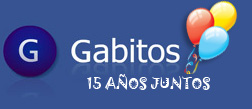|
|
General: ¿CUAL ES EL MISTERIO QUE ESCONDE RENNES LE CHATEAU?
Elegir otro panel de mensajes |
|
|
Rennes-le-Chteau: El Misterio De La Tumba
|
|
 n oscuro monumento situado en las cercanías de Rennes-le-Chteau sirvió de modelo para un cuadro pintado en Italia y expuesto actualmente en el Louvre. Éste y otros enigmas vinculan al abate Saunière con historias de tesoros ocultos y órdenes militares. n oscuro monumento situado en las cercanías de Rennes-le-Chteau sirvió de modelo para un cuadro pintado en Italia y expuesto actualmente en el Louvre. Éste y otros enigmas vinculan al abate Saunière con historias de tesoros ocultos y órdenes militares.
|
| |
|
 |
 |
|
El arco de triunfo de Tito, en el foro de Roma, muestra la gran menorah (candelabro de seis brazos), las trompetas de plata y lo que podría ser el Arca de la Alianza, todo ello tesoros del templo de Salomón.
|
Cuando Béranger Saunière pasó varias noches en el cementerio de Rennes-le-Cháteau borrando las inscripciones de las dos lápidas de la tumba de Marie de Negri d'Albes, no sabía que ya habían sido copiadas: una vez por el Bulletin de la Société des études scientifiques de l'Aude, y otra en un libro de Eugène Stublein, Pierres gravées du Languedoc.
La primera lápida se ha perdido. En la transcripción, llaman la atención los errores que contiene. Al parecer, fue encargada por el que era entonces abate de Rennes-le-Cháteau, Antoine Bigou.
La segunda piedra subsiste, sin ninguna inscripción, como tapa de un osario, en el rincón noroeste del cementerio. Tenía grabadas una serie de frases enigmáticas, entre ellas un lema monogramático que también aparece en uno de los manuscritos que descubrió Saunière. Una de las frases es el conocido dicho latino Et in Arcadia Ego, cuya traducción es «Yo también estoy en Arcadia». Significa que aun en el legendario paraíso de los pastores griegos, la muerte estaba presente.
Saunière trajo consigo de París una reproducción del cuadro «Los pastores de Arcadia» de Nicolás Poussin, pintado entre 1635 y 1650. Representa a tres pastores y una pastora clásicos ante una gran tumba, en la que se lee una inscripción: «Et in Arcadia Ego». Y a 10 kilómetros de Rennes-le-Cháteau, en una colina rocosa, está esa misma tumba. Ha sido recubierta con cemento, de modo que no se aprecia ninguna inscripción, pero su forma es inconfundible y hasta ciertos picos montañosos del horizonte pueden ser identificados.
Marie de Negri estaba emparentada con la familia de Hautpoul, descendiente de Bertrand de Blanchefort (primer Gran Maestre templario), y con los Fleury, que recibieron la herencia familiar. En 1644, François-Pierre de Hautpoul, barón de Rennes, hizo testamento y le agregó documentos que apoyaban el derecho al título de la familia durante más de 600 años. El testamento y los documentos se extraviaron durante más de 130 años. Cuando fueron recuperados en el despacho de un notario y un Hautpoul quiso verlos, recibió la siguiente respuesta: «No sería prudente por mi parte hacer público un testamento tan importante...» Los papeles volvieron a desvanecerse.
En 1792, Bigou rehusó jurar fidelidad a la nueva República Francesa y cruzó la frontera en dirección a España, donde murió. La familia Fleury también se exilió.
 |
|
Al parecer, éste es el modelo de la tumba que pintó Poussin en su cuadro, aunque un recubrimiento de cemento impide apreciar si en ella ha habido inscripciones. Este enigmático monumento se halla en una colina cercana a Rennes-le-Chteau, en la parroquia de Arques.
|
Pero en la decoración de la iglesia, Saunière hizo una alusión directa a las tierras de los Fleury. Sobre el confesionario hay un gran relieve que representa a Cristo en el monte de los Olivos, hecho de madera y yeso. El empinado montecillo está lleno de flores (fleuri, en francés) y el paisaje del fondo tiene rasgos del de los alrededores de Rennes.
Se ha especulado con el significado del texto que hay debajo de este cuadro: «Venid a mí, los que estáis abrumados, y yo os daré el descanso». En francés, «los que estáis abrumados» se dice «vous qui êtes accablés», y es fácil descubrir las palabras été (verano), sac à cable (saco con cuerda) y blé (trigo, pero también tesoro, en lenguaje coloquial).
Se han descubierto acertijos del mismo tipo en la inscripción de una imagen de la Magdalena que el mismo Saunière pintó en el panel delantero del altar. El ingenuo relieve muestra a María Magdalena arrodillada en una gruta. Existen muchas grutas y cuevas alrededor de Rennes. En su juventud, Saunière debió de conocer a un viejo ermitaño que vivía no muy lejos, en la garganta de Galamus, en una gruta o aven aislada y dedicada a San Antonio, parecidísima a aquella en que se arrodilla la Magdalena, y que también coincide con la descripción del abismo en el cual el pastor Paris descubrió sus monedas.
Por otra parte, existe un vínculo significativo entre San Antonio y María Magdalena. San Antonio está considerado como la primera persona que organizó la vida monástica. Algunas de sus reliquias fueron trasladadas a Francia, y en el siglo XI se construyó una gran catedral para custodiarlas. Quienes habían recuperado las reliquias fundaron la Orden de San Antonio, que finalmente se fusionó con una de las grandes órdenes militares, los Hospitalarios de San Juan.
 |
|
Losa de la tumba de Marie de Negri d'Albes, con el lema «Et in Arcadia Ego» grabado en caracteres latinos y griegos.
|
Se dice que los antoninos introdujeron el culto de Santa María Egipcíaca. Ésta, que vivió a fines del siglo IV, había sido prostituta en Alejandría. Pero inspirándose en la historia de San Antonio se arrepintió, y pasó el resto de su vida sola en un lugar desierto. Se la confundió con María Magdalena en la oscura leyenda de las tres Marías, evangelizadoras de la Provenza, con lo cual enlaza también con los cultos de las vírgenes negras que había sobrevivido en toda Francia en grutas subterráneas, dedicadas a la antigua diosa madre.
Por otra parte, después de la ascensión de la masonería en Francia, no pasó mucho tiempo antes de que se afirmara que existía una conexión legendaria entre los antiguos secretos de los constructores del templo de Salomón, los caballeros templarios y la masonería escocesa.
Cuando Béranger Saunière llegó a París en enero de 1893, se encontró en medio de una disputa entre la Ordre Kabbalistique en la Rose-Croix y la Ordre de la Rose-Croix Catholique du Temple et du Graal. El Rosacrucianismo y la Rose-Croix no eran nuevos en Francia. Ya en 1623 se dijo que el filósofo Descartes era rosacruz. Y en la Francmasonería, el grado 18 del rito «escocés» es el Caballero del Pelícano y del Águila y Príncipe Soberano Rosacruz de Heredom.
Pero la Francmasonería fue prohibida en tiempos de la Revolución Francesa. Aunque Napoleón revivió el interés por el movimiento, hubo que esperar a la restauración de la monarquía para que volviera a florecer, combinado con un creciente interés por el ocultismo.
El hilo está enredado, y hay pocas o ninguna prueba de que las extravagantes afirmaciones que se han hecho sean ciertas. Pero si los templarios o los antoninos hubiesen poseído información secreta, ésta podría haber pasado a los hospitalarios, que se hicieron cargo de gran parte de las propiedades de los templarios, o podría haber pasado de generación en generación a través de las familias supervivientes. Quizá sea cierto que los Rosacruces poseían un secreto, como pretendían ellos; quizá la Francmasonería tiene realmente la clave del enigma Rosacruz; quizá algún ocultista de París reconoció en los papeles que traía Saunière la clave de algo perdido y muy preciado.
 |
|
Lápida de la tumba de Marie deNegri d'Albes. En ella hay un considerable número de errores.
|
Junto a la entrada de la iglesia de Rennes puede verse una figura de Asmodeo, «demonio y guardián» que custodiaba el tesoro de Salomón. Encima de él hay cuatro ángeles. A primera vista, éstos parecen hacer la señal de la cruz, pero el ángel de arriba tiene la mano izquierda en el pecho y la mano derecha encima de la cabeza: éste es el gesto de Asmodeo, el signo que rodeaba la cabeza de macho cabrío de Baphomet en los ritos de los templarios.
Y así están las cosas, por el momento. Todavía no sabemos -y probablemente no sabremos nunca- qué fue lo que encontró Saunière. El misterio empieza con el descubrimiento de los manuscritos y su conexión con la tumba de Marie de Negri d'Albes. Sólo dos de los cuatro manuscritos han sido fotografiados y publicados; quizá fueran los menos importantes, y los otros proporcionen detalles más explícitos acerca de la ubicación del tesoro, cuya leyenda había ido pasando, de generación en generación, por la familia Blanchefort.
Pero la pieza que faltaba tenía que ser, o un documento, o el mismo tesoro y, presumiblemente, la tumba que pintó Poussin contenía alguna clave, razón por la cual fue cubierta de cemento. También la gruta puede haber contenido un tesoro escondido -de los visigodos, de los cátaros, de los templarios- cuya recuperación puede haber sido confiada a Saunière con la debida supervisión. Quizá éste, como muestra de agradecimiento, restauró su iglesia con motivos que hacían una enigmática referencia al origen de su riqueza.
El papel desempeñado por el Prieuré de Sion, la conexión con los Habsburgo y todas las ramificaciones de esta organización casi desconocida... son otra historia.
El Secreto De La Tumba
 |
|
Hay dos versiones del cuadro de Poussin, donde en una ha desaparecido el cráneo y algunos personajes han sido sustituidos por otros.
|
El cuadro de Poussin «Los pastores de Arcadia» del que existen dos versiones, plantea algunos problemas fascinantes. La primera versión, que pertenece en la actualidad a la colección de Chatsworth House, en Derbyshire (Inglaterra), se inspiró en un cuadro del Guercino, ejecutado en 1620, y parece probable que el Guercino o sus mecenas, Giulio Rospigliosi, que después fue el papa Clemente IX, compusieran la famosa frase «Et in Arcadia Ego».
En el cuadro del Guercino, dos pastores han encontrado un cráneo humano apoyado en un bloque de piedra en el que está grabada la inscripción; en la primera versión de Poussin, dos pastores y una pastora leen la inscripción en una tumba ornamentada al estilo clásico. El cráneo, que forma parte de la decoración de la tumba, es apenas visible, y la cuarta figura es una personificación del río Alfeo.
La segunda versión del cuadro, la que se halla ahora en el Louvre, es visiblemente distinta. El cráneo ha desaparecido, Alfeo ha sido sustituido por un tercer pastor, y las posiciones de las figuras han cambiado. En cuanto a la tumba, ha perdido toda su elegancia y su decoración; ahora constituye un bloque casi cúbico de piedras toscamente talladas, y la parte superior tiene la característica inclinación de la tumba solitaria de las afueras de Arques. Parece imposible que Poussin eligiera como modelo semejante monumento a menos que el original le resultara familiar. Y, ¿qué razones pudo tener para realizar una segunda versión de un tema no muy corriente? En efecto, este tema parece haber tenido un significado especial en la vida de Poussin: cuando su tumba, en Roma, fue restaurada por Chateaubriand en 1829, le agregó un relieve con los pastores de Arcadia.
http://www.mundoparanormal.com/docs/enigmas/rennes_le_chateau_el_misterio_tumba.html
|
|
|
|
|
|
1. Génesis 28:12 Y soñó: y he aquí una ESCALERA que estaba apoyada en tierra, y su extremo tocaba en el cielo; y he aquí ángeles de Dios que subían y descendían por ella.
2. 1 Reyes 6:8 La puerta del aposento de en medio estaba al lado derecho de la casa; y se subía por una ESCALERA de caracol al de en medio, y del aposento de en medio al tercero.
| Reply |
Message 10 of 10 on the subject |
|
ESCRITO II CONOCIMIENTO.- LA TORRE MAGDALA
Un pequeño paseo por los jardines aledaños a la iglesia de
Rennes-le-Chteau nos llevó hasta situarnos frente a una torre
amurallada, que según nos contaba un vecino del lugar, fue
ordenada construir a finales del siglo XIX por el mismo sacerdote
que mandó restaurar la iglesia, Torre Magdala la llamó.
Se podía visitar, por lo tanto, decidimos entrar en ella. Denotaba
ser un lugar de estudio y recogimiento. Sobrio, con unas librerías
que aún conservaban algunos ejemplares en sus estantes, pero que al parecer no eran los que originalmente habían sido consultados por el sacerdote.
Una escalera de caracol nos trasladó a una segunda planta, una
amplia terraza desde donde contemplamos toda la comarca. Nos
quedamos ensimismados con el paisaje. Desde este punto la
Tierra nos hacía sentir lo infinitamente pequeños que somos, unas
simples criaturas del universo rodeadas de una naturaleza que nos
invita a fundirnos en ella.
Los gorriones vestidos como antiguos monjes mendicantes
alabando con su piar a la vida; los viñedos amamantándose de la
tierra, prestos a ofrecernos su jugo en unos meses; los árboles
incitándonos a elevarnos junto a ellos hasta el cielo.
Nuestras almas se sentían unidas con el entorno…
Un leve susurro y... la Madre Tierra comenzó a hablarnos:
«Como veis, mis pequeños — una dulce y suave Voz femenina
parecía salir tanto del entorno como de nuestro interior—, no me
presento bajo el manto de una virgen como hice en otro tiempo.
Me estáis viendo a través de vuestros ojos, contempláis mi ropaje
en la naturaleza que os rodea y, sobre todo, me sentís en la
profundidad de vuestro ser.
Cerrad los ojos y percibiréis una llama que arde en vosotros, que
asciende desde mi esencia, desde lo más profundo de esta tierra,
su núcleo, que sube por vuestra columna alumbrándoos en la
oscuridad de vuestras noches. Una llama que crece día a día a
través de las edades y que hoy a vosotros, a todos mis pequeños,
está permitiendo que os sintáis más y más unidos, no sólo unos
hermanos con otros, sino con todos mis hijos. Sí, con los que
llamáis animales irracionales, con los árboles y demás plantas que
pueblan este planeta, con los minerales que creéis inertes y con
aquellos seres aún invisibles a vuestros ojos.
Todo está vivo en mí, y está llegando el momento en que yo
también despierto de mi ensueño.
Un amanecer nuevo, una nueva era comienza y aunque algunas
heridas tengo en mi cuerpo, nada podrá impedir que éste crezca.
Vosotros me ayudaréis a sanarlas al igual que yo ayudo a sanar
las vuestras.»
Un breve silencio colmó el lugar y la Voz femenina continuó:
«No os dejéis llevar por el desaliento quedándoos sólo con el
acontecer superficial ya que es necesario que se produzcan
algunos cambios, pero nada que os haga pensar que la vida aquí
desaparecerá. Haced oídos sordos a quienes anuncian un final
apocalíptico, pues éstos solamente viven y sienten bajo el antiguo
sistema del temor… Un sistema que tiene el tiempo contado.
Mi llama arde cada vez con más poder, está ascendiendo y me
elevará a mí con todas mis criaturas. Yo os protejo, pero ya es
llegado el momento en que seáis dueños de vuestro propio
destino. Aunque sigáis viviendo en el seno materno conoceréis
que la vida trasciende los límites de mi cuerpo.
Desde hace millones de años mis “hermanas” y yo
intercambiamos la vida que nos habita, que somos, al igual que en
vosotros vuestras células se intercambian de unos a otros. Nada
habéis de temer, pues lo iréis experimentando según vuestra
capacidad de entendimiento.
Todo en el universo es comunión, no hay nada que viva aislado,
esto sólo es producto del estado mental en que os sumisteis y del
que estáis, estamos, emergiendo.
Estamos ahora viviendo en una comunión cada vez mayor.
Así, como tenéis una Madre y un Padre que se manifiesta ante y
en vosotros, hay un modelo de Hija-Hijo, un ideal que está
grabado a fuego en vosotros y que se manifiesta a través de las
edades. Según crecéis, maduráis, le sentís cada vez más próximo,
está en vuestros genes. La presencia de mi Hijo manifestada hace
dos mil años volverá a vosotros para que crezcáis con Él y en Él
en una nueva conciencia más incluyente, más amorosa y
comprensiva de la Vida. Su presencia es sentida en el corazón de
muchos de vosotros y cada día lo será aún más. Su comunión es
vivida y conocida en quienes mi llama asciende y ha ascendido
hasta fundirse en ellos con el Cielo.
No veáis a mi Hijo independiente de vosotros, ajeno a vuestras
vidas, como un ser lejano e inalcanzable. No penséis que Él sólo
vendrá desde el exterior, olvidad esa visión infantil. Le
contemplaréis en vosotros y os mostrará un rostro sin igual, un
semblante que señalará el primer paso del siguiente peldaño de la
humanidad donde se funden el día y la noche. Un rostro que será
el vuestro y que… no olvidaréis.
Mi Hijo sois todos.
El Cielo y la Tierra se unen cada día un poco más.
Yo, vuestra Madre, estoy en vosotros al igual que vuestro Padre
lo está.
Mis pequeños… ¡Ascended conmigo!
¡Soy el Amor!»
Y la Voz cesó.
Una fina lluvia empezó a deslizarse sobre nuestros cuerpos,
sentimos su frescura penetrando como un bálsamo nuestras almas.
El cielo no distingue y a todos nos impregna por igual con su
savia.
Nos miramos y salimos de la Torre Magdala caminando sin
prisas, empapados de Vida. Un rosal lucía sus mejores galas, sus
flores con sus pétalos escarlatas al igual que llamas vivas
destacaban en el jardín, recordándonos que aún hay mucho
trabajo por hacer hasta que la llama de la Vida se instale en todos
los corazones.
http://rosacastillobcn.blogspot.com.ar/2015_03_17_archive.html
|
|
|
|
|
|
|

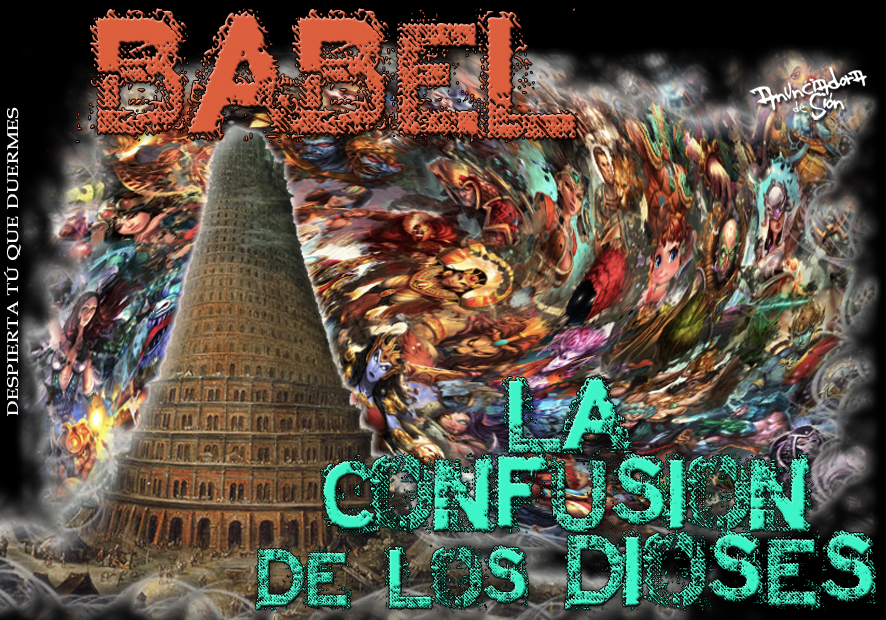   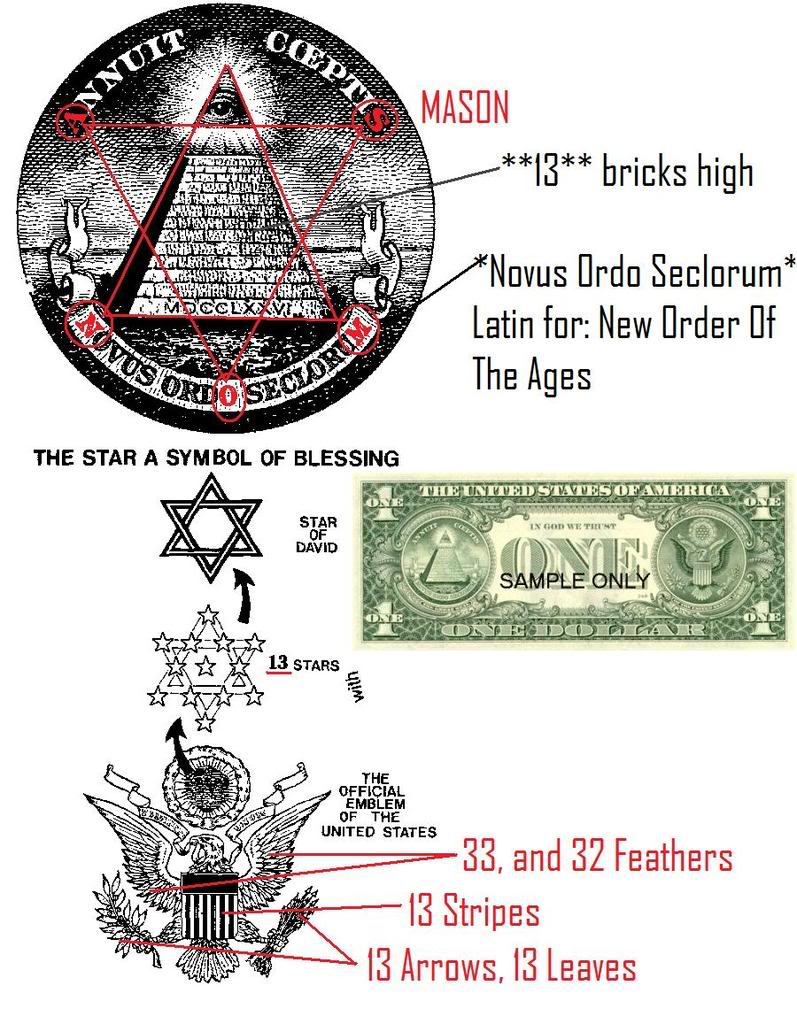 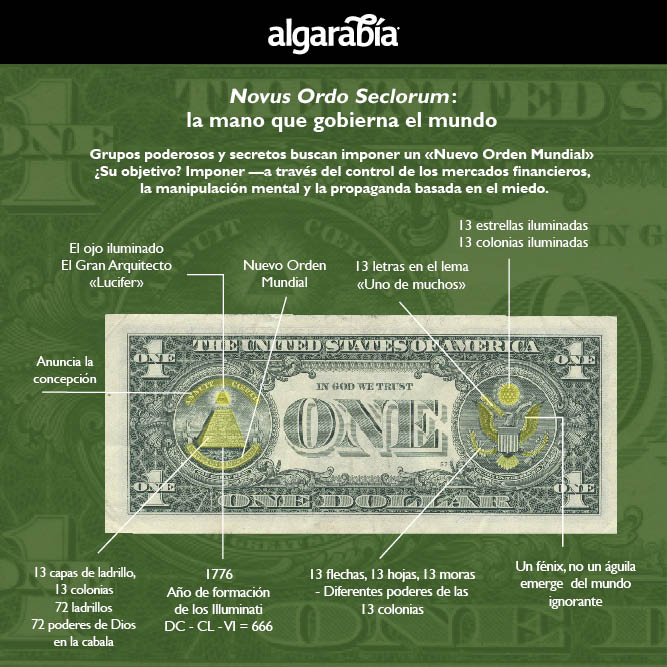
Statue of Liberty
The height of the Statue of Liberty is 111′-1″ from bottom of foot to top of head. The 7 rays on the crown and the 11 points of the base star echo the proportions of the Great Pyramid’s 7:11 height to base proportion. The superb book Talisman by Graham Hancock and Robert Bauval convincingly shows this goddess is actually the Egyptian Isis.
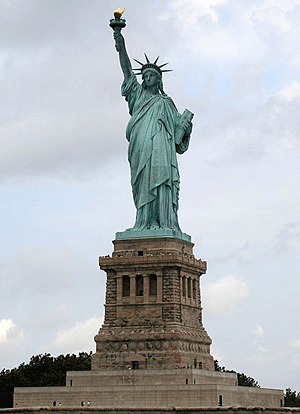
Image courtesy Elcobbola under the Creative Commons Attribution-Share Alike 3.0 Unported license.
http://www.viewzone.com/onstott66.html

MONTSEGUR VOLCAN/CAN / TEOTIHUACAN / VATICANO / CANA/ AMERICAN/ MEXICAN/ CAN MAYOR (SIRIO)- BODAS DE CANA
Location
Montségur is in the Ariege, in the foothills of the Pyrenees, not far from Lavelanet, due South from Mirepoix.
Montségur lies at 42°52'35" N, 1°49'51" E on a pog (a volcanic pluton) at an altitude of 1,207 meters. The castle is owned by the Commune of Montségur. There is an entrance fee, which also covers entry to a museum in the nearby town.
Guided Tours
Cathar Castle Tours
Mairie: mairie.montsegur@wanadoo.fr
Tel: 05 61 0110 27
Tourist Information Office:
Tel: 05 61 03 03 03


|
|
aerial view of Montségur
|
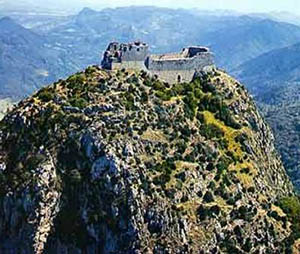 |
|
MARIA MAGDALENA EN EL CATARISMO (CATAROS)
25 DE ABRIL=DIA DE SAN MARCOS
22 DE JULIO=DIA DE MARIA LA MAGDALENA
MASON FRANCES
|
|
|
|
|

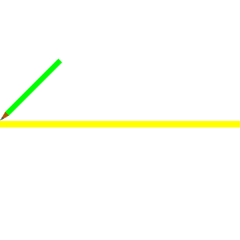
Sabemos que Vesica Piscis esta en funcion al a los 153 peces de Juan 21:11.
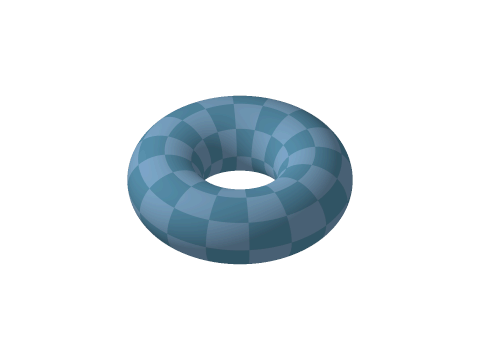 Aqui tenemos a Pi - la circunferencia del toro y la vesica piscis 256/153 equivalente a la raiz cuadrada de 3 En el hipercubo las coordinadas binarias de Piscis son decimal 3 y binario 11 153 los pescados de Jesus en la biblia    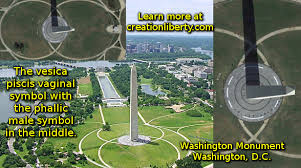   
I have a lot to say about pythagorean triangles in my videos. In particular I have found many references to 5:12:13 triangles and 5:12 rectangles (that’s 2 of the triangles put together) in Stonehenge and the whole region surrounding it, in Washington DC, Paris, and Jerusalem. Someone who listened to my first Red Ice interview contacted me with a major discovery he made in regards to the 5:12 proportion. Brace yourself…

A rectangle measuring 5 feet by 12 feet has an area of 8640 square inches. This is something I can work with. I’m never going to be able to build an 864 foot solar Osiris talisman on a geodetic hot spot, but I think I can manage making a few raised garden beds measuring exactly 5 by 12 feet. And where I live in Canada (above 50 degrees North) can really use more resonance with the Sun.
If you saw SIPS Volume 1, you might recall that Stonehenge has its station stones which describe a 5×12 rectangle.

from SIPS Volume 1
Stonehenge is also 33.33° from Solomon’s Temple.

Sapientia Aedificavit Sibi Domum. Es decir, "la sabiduría ha edificado aquí su casa". Resulta curioso que la misma frase aparece en el Evangelio de María Magdalena, un texto apócrifo. Se dice que en el interior de esta iglesia y de otras muchas de Venecia está escondido el tesoro de los templarios. Pero no hay ninguna prueba de ello. Para terminar ya con esta entrada me gustaría que nos acercásemos un momento a uno de los edificios más emblemáticos de Venecia: el Palacio Ducal.
|
|
|
|
|
Imagen: Torre Magdala (Rennes-le-Chteau) (Wikimedia Commons)
Durante décadas, las historias sobre un tesoro fastuoso enterrado y ubicado en los alrededores del pequeño pueblo de Rennes-le-Chteau ha llevado a cientos de curiosos, teóricos de la conspiración y cazadores de tesoros al sur de Francia. ¿Qué hay de verdad y qué hay de mito en el relato de este Santo Grial?
Hace unos años, la policía francesa comenzó a patrullar el área cercana a la aldea de Sougraigne, en la región de Aude, por temor a que ciertos reclamos sorprendentes condujeran a una repentina y masiva afluencia de buscadores de tesoros no deseados. Al parecer, una cueva formaba parte de un tesorolargamente buscado.
Sougraigne está muy cerca a Rennes-Le-Chateau, cuyo carismático y misterioso sacerdote adinerado, Béranger Saunière, inspiró en parte la exitosa novela de Dan Brown, el Código Da Vinci. De hecho, uno de los personajes del libro, el conservador del Louvre, toma prestado el apellido Saunière.
Cuenta la leyenda que existen tesoros incalculables escondidos en las cercanías de Rennes-Le-Chateau. Tesoros que incluyen el oro de los visigodos, incluyendo la Menorá original, el candelabro de oro de siete brazos utilizado por Moisés en el desierto y más tarde en el Templo de Jerusalén, construido por el rey Salomón. Casi nada.
No sólo eso, hay quién va más allá hablando de premios que aguardan a aquellos que descifren los códigos religiosos ocultos con el tesoro de los Caballeros Templarios, pergaminos que prueban que Jesús y María Magdalena tuvieron un amor secreto o el tesoro perdido de los Cátaros, cuyos desmoronados castillos del siglo XI todavía se yerguen encima de las montañas en los Pirineos cercanos.
En realidad, la historia de este pueblo refleja la de muchos otros europeos. Comenzó como una especie de campamento prehistórico, seguido de una villa romana. Treinta mil personas vivían en la ciudad alrededor de 500-600 dC, con un cada vez mayor número de castillos alrededor del año 1000 dC. Luego, en los tiempos modernos, Rennes-le-Chteau se hizo tremendamente famoso a mediados de 1950 con las historias relacionadas con el sacerdote católico, Francois Bérenger Saunière.
El sacerdote y su tesoro
Imagen: Asmodeo, en la iglesia de Rennes le Chteau (Wikimedia Commons)
El punto de partida se inicia con Saunière, el sacerdote de un pequeño pueblo de finales del siglo XIX y principios del XX. Un día, Saunière encontró grandes sumas de dinero, cantidades tan grandes que era inimaginable cómo un cura de una aldea podría llegar a tener tanta riqueza. Esto llevó a los habitantes a preguntarse y especular sobre dónde y cómo obtuvo dicha suma. Algunos dicen que descubrió un tesoro enterrado, pero esta teoría nunca se ha corroborado.
Durante sus primeros años en la aldea, Saunière vivió en la pobreza. Mantuvo informes minuciosos de su dinero, lo que demuestra, por ejemplo, que en 1892 tenía una deuda de poco más de 100 francos, o que tenía unos pequeños ahorros. Desde la década de 1890 en adelante, sus documentos mostraron que gastó una alarmante cifra total de 660.000 francos.
Imagen: Rennes-le-Chteau (Wikimedia Commons)
Como sacerdote, ganaba un salario de 900 francos al año, por lo que es difícil imaginar cómo podría haber obtenido dichos ingresos realizando solo la misa. En 1910, Saunière fue convocado por el obispado para comparecer ante un juicio eclesiástico y enfrentar cargos por recibir dinero para las masas que en realidad nunca llegó a enviar. Fue declarado culpable y suspendido del sacerdocio. Cuando se le pidió que presentara sus libros de cuentas, se negó a asistir a su juicio.
Dicho esto, incluso si Saunière fuera culpable por los delitos que se le acusaban, resulta difícil pensar que podría haber recolectado el suficiente dinero a través de esta práctica como para acumular las sumas que gastó durante su vida. Cuando estaba cerca de la muerte, Saunière comenzó a tener dificultades financieras. Momento que coincidió con el comienzo de la Primera Guerra Mundial, lo que podría indicar que sus fondos se llevaron a cabo en el extranjero y que ya no podía acceder a ellos.
Imagen: Figura de calavera sobre la entrada al cementerio (Wikimedia Commons)
Sea como fuere, la vida financiera del sacerdote ha dado lugar a muchas teorías de conspiración sobre Rennes-le-Chteau y de dónde pudo venir el dinero. Algunos dicen que encontró un tesoro enterrado. Otros lo acusaron de cavar tumbas y robar a los muertos. Incluso hay quien especula que es una historia inventada para atraer a turistas. Oficialmente, cuando sus gastos fueron investigados por la iglesia, Saunière afirmó que el dinero le había sido otorgado, pero tampoco dio más explicaciones.
Marie Dénarnaud, la fiel ama de llaves acusada de excavar en las tumbas con Saunière, afirmó conocer un secreto que haría a cualquier persona extremadamente rica. Cuando Noel Corbu le compró el patrimonio de Saunière, ella le dijo que le diría un secreto que lo haría tremendamente poderoso y rico.
Poco después, Marie afirmó públicamente que había escondido un tesoro bajo Rennes-Le-Chateau. Decía que el padre de Saunière había amasado misteriosamente el equivalente a un millón de libras en oro. Sin embargo, antes de su muerte, Dénarnaud tuvo un ataque que la dejó incapacitada para escribir o hablar. La mujer se llevó su secreto a la tumba.
Búsqueda del tesoro
Imagen: Vista aérea de Rennes-le-Chteau (Wikimedia Commons)
Así llegamos a la década de 1950, momento en que Corbu comenzó a circular historias sobre pergaminos de Saunière que encontró mientras renovaba su iglesia en 1892, libretos vinculados al tesoro de Blanca de Castilla, que supuestamente ascendía a 28.000.000 piezas de oro. Este fue el tesoro de la corona francesa reunida por la esposa de Luis VIII para pagar el rescate de su hijo Luis IX, quien fue capturado durante una cruzada. Se dice que se escondió en Rennes-le-Chteau.
Una década después, la búsqueda del tesoro alcanzó su apogeo con los cazadores usando varios tipos de explosivos para derruir las paredes de piedra, cavar en las zonas de entierros y alcantarillas o incluso cavar en la iglesia antes de irse con las manos vacías.
Tal fue el daño causado por los sepultureros, que el entonces alcalde local, Jean-François L’Huillier, se vio obligado a sacar el cuerpo de Saunièr y volver a enterrarlo. “Por fin está en paz bajo un sarcófago de tres toneladas rodeado de cinco metros cúbicos de cemento”, dijo L’Huillier en 2004.
Imagen: Altar de la iglesia (Wikimedia Commons)
El misterio resucitó con la novela El Código Da Vinci de Dan Brown, cuyo argumento incluía la afirmación de que Jesús no murió en la cruz sino que sobrevivió, se casó con María Magdalena y huyó a Francia. Como decíamos al comienzo, uno de los personajes principales se llama Jacques Saunière.
En el año 2011, tres investigadores afirmaban que los cazadores estaban buscando en el lugar equivocado, y que el tesoro se encontraba realmente en una cueva de una pequeña colina llamada Pech d’En-Couty, pero lo cierto es que nadie ha logrado encontrarlo.
Puede que nunca se sepa la verdadera historia de Saunière y su fortuna, como en tantos relatos con oro de por medio, parece más una cuestión de fe que de hechos contrastados. Y es que la verdad, la única que se dio, probablemente se la llevó a su tumba Saunière cuando falleció el 22 de enero de 1917. [Wikipedia, Telegraph, Rennes-le-Chteau, The Guardian]
https://es.gizmodo.com/en-este-pequeno-pueblo-frances-hay-un-tesoro-enterrado-1826563776 |
|
|
|
|
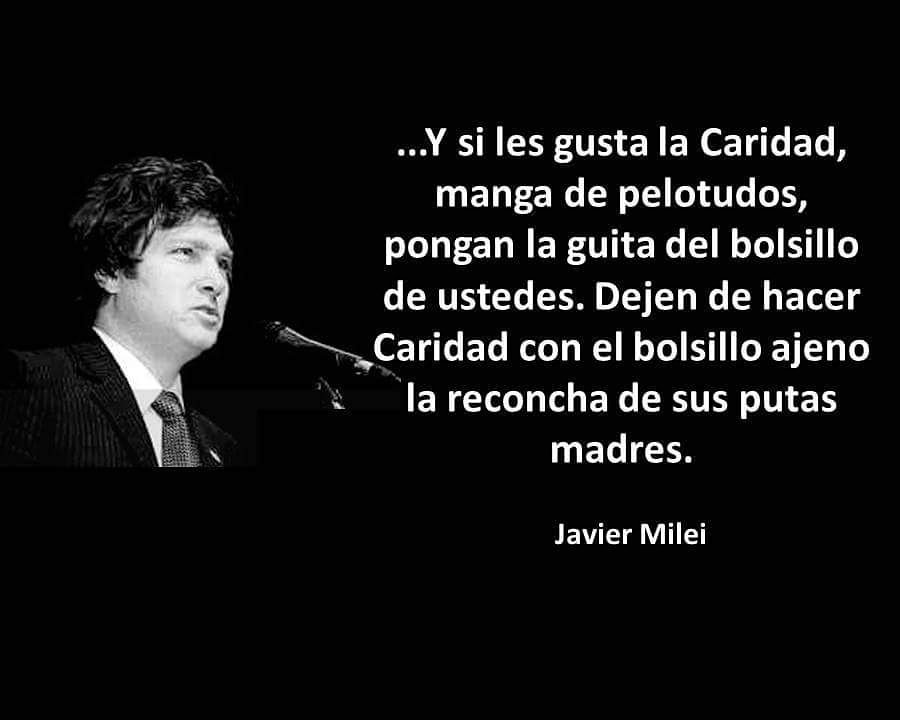
SIRIO ES LA CONSTELACION DEL PERRO/ CAN MAYOR
Nebulosa Cabeza de Caballo
De Wikipedia, la enciclopedia libre
| Nebulosa Cabeza de Caballo |
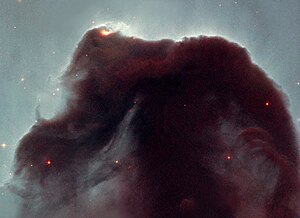 |
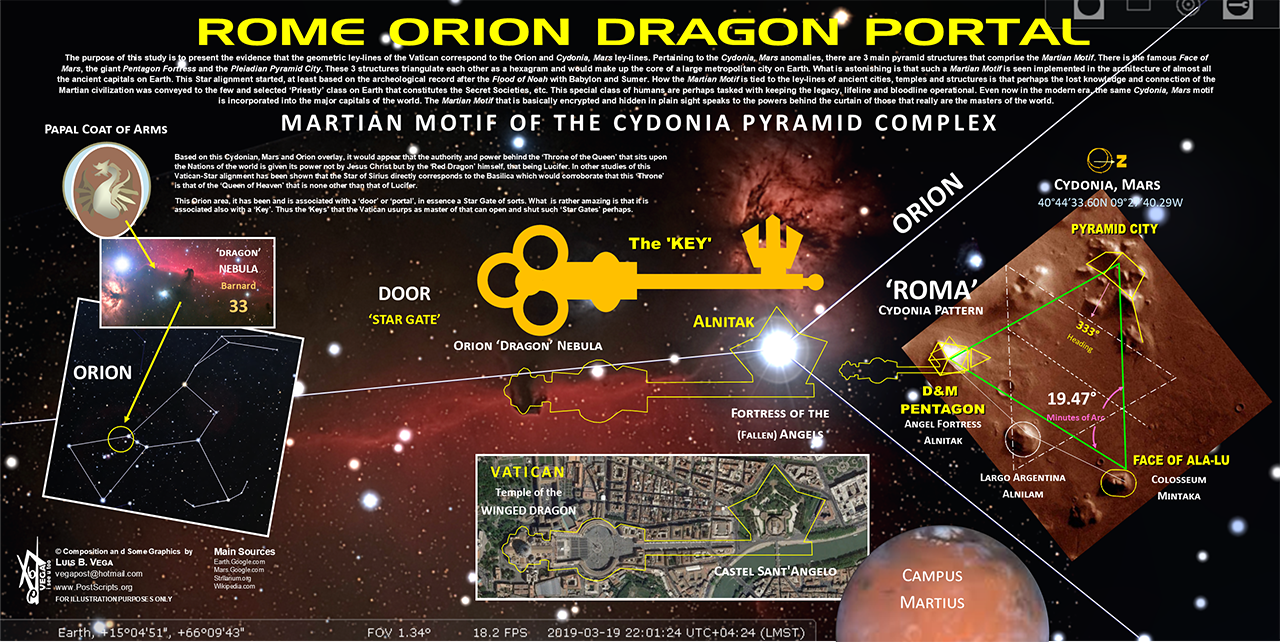
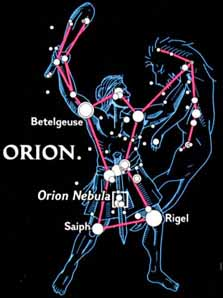
Statue of Liberty
The height of the Statue of Liberty is 111′-1″ from bottom of foot to top of head. The 7 rays on the crown and the 11 points of the base star echo the proportions of the Great Pyramid’s 7:11 height to base proportion. The superb book Talisman by Graham Hancock and Robert Bauval convincingly shows this goddess is actually the Egyptian Isis.

Image courtesy Elcobbola under the Creative Commons Attribution-Share Alike 3.0 Unported license.
http://www.viewzone.com/onstott66.html


hace 3 días - Manipularon la historia a través de las fuentes de los textos en su lenguaje inventado llamado Latín, peeeeero no pudieron cambiar el ... Jose Alfonso Hernando ... la famosa batalla de Troya, y HASTA AHÍ NOS VAMOS PARA VER QUE ... “Las matemáticas nos hacen más libres y menos manipulables”.
hace 3 días - Principal / Valdeande Magico / ¡¡¡ Visitamos TROYES, donde fue la Guerra de Troya !!! ¡¡¡ Visitamos TROYES, donde fue la Guerra de Troya !!!
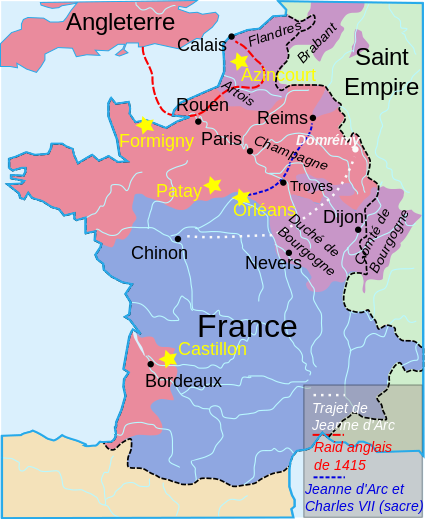

Troyes is the former capital of Champagne and is a perfect short trip visit from Paris. At just an hour and a half by train it can be a day trip but a couple of days and an overnight stay would be better because there’s so much to see and do in this lovely, vibrant city.
A town that is shaped like a Champagne cork in Champagne?
Troyes is an ancient city, once a Roman town with a direct road from Milan and onwards to Boulogne-sur-Mer on the Opal Coast in the north of France – the route for the invasion of Britain. Later the rich and powerful Counts of Champagne built a palace in Troyes and it was a prosperous place that attracted merchants from all over Europe. The counts fortified their town and though at that time Champagne didn’t even exist, the walls took the form of a Champagne cork.
Following a huge fire in 1524 that destroyed many of the ancient buildings that were constructed from wood, new brick buildings were erected and many of them remain to this day. Indeed the inhabitants of Troyes lived in these buildings pretty much as they had been for hundreds of years right up until the 1950s. It was a decade when the town council went on a bit of a renovation rampage to improve conditions since many of the old buildings had no bathrooms and poor hygiene conditions.
Fortunately they didn’t destroy too much and visiting Troyes is like stepping back in time. Every street seems to have its quota of half-timbered houses and there are cobbled streets and tiny alleyways that create a mesmerising maze in the centre of the old town of Troyes. In the little ruelle des Chats (Cats Alley) you’ll see it is so narrow that the houses lean in and touch via a central gutter at the top and cats could cross from houses on both sides of the roads. At the side of the office of the Mutuelle Societe at 111 rue Emile Zola you can enter a gate and at the back you’ll discover a stunning renaissance house looking exactly as it did when it was built. At the Cour du Mortier d’or, the ancient timber frames still bear the workman’s trademarks.
Everywhere you go here you’ll discover traces of history from hundreds of years ago, quaint, quirky and irresistibly charming…
Read the rest of this story in our free magazine – click here to go straight to it!
|
|
|
|
|
ANKH=RENNE LE CHATEAU=MARIE MADELEINE=FRANCE
|
|
|
 Primer Primer
 Anterior
57 a 71 de 71
Siguiente Anterior
57 a 71 de 71
Siguiente
 Último
Último

|
|
| |
|
|
©2024 - Gabitos - Todos los derechos reservados | |
|
|
